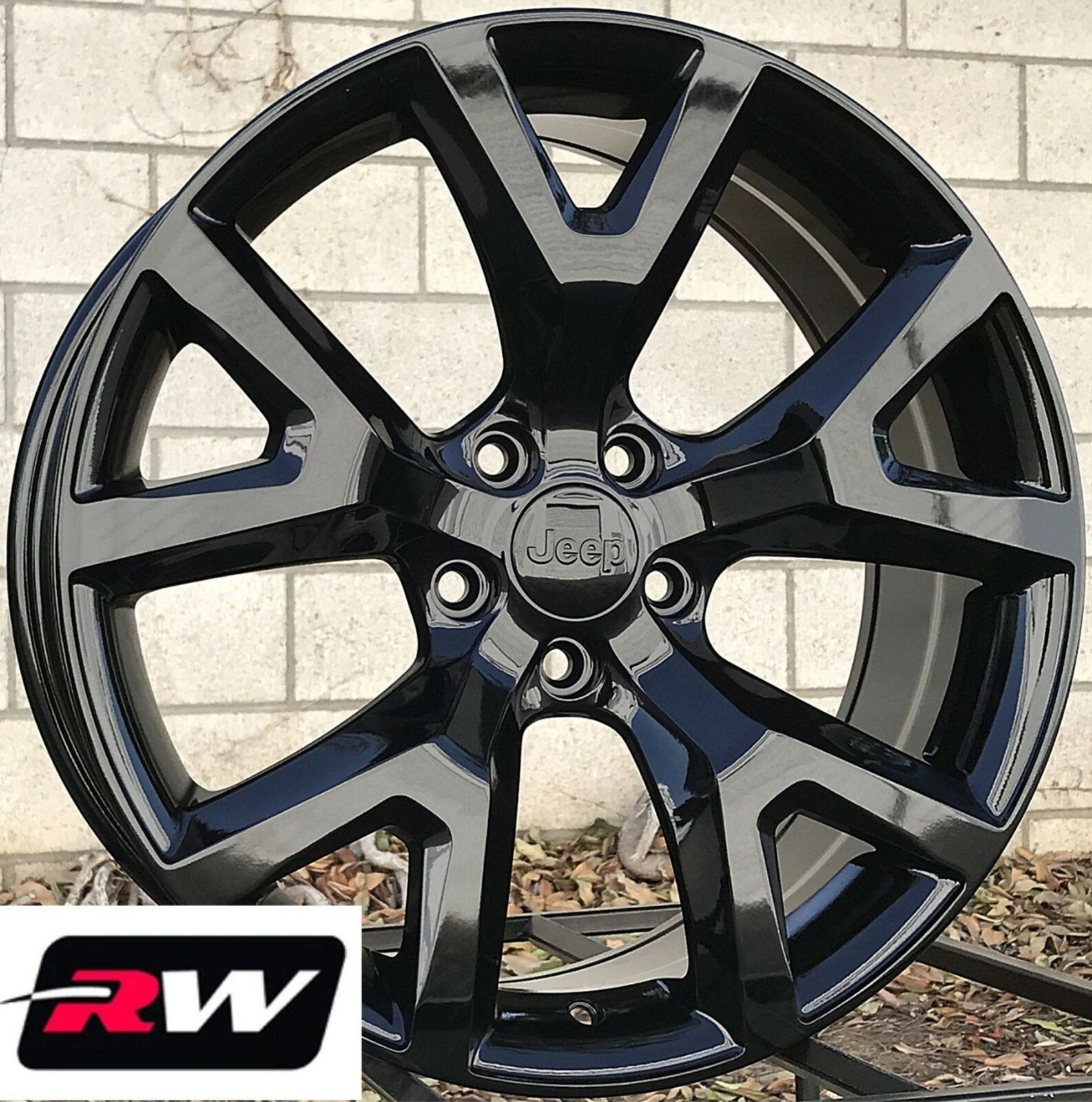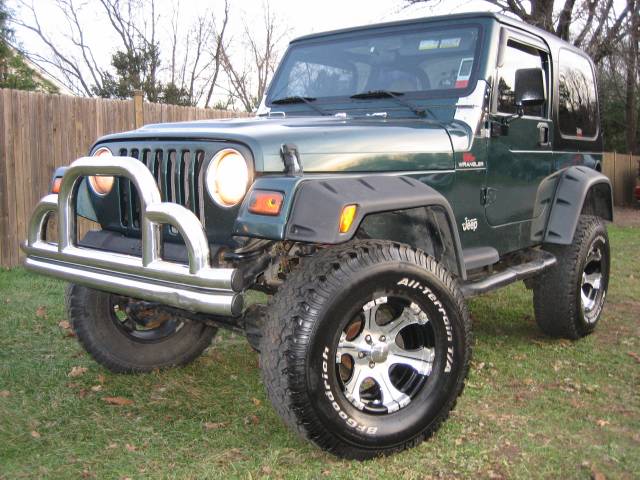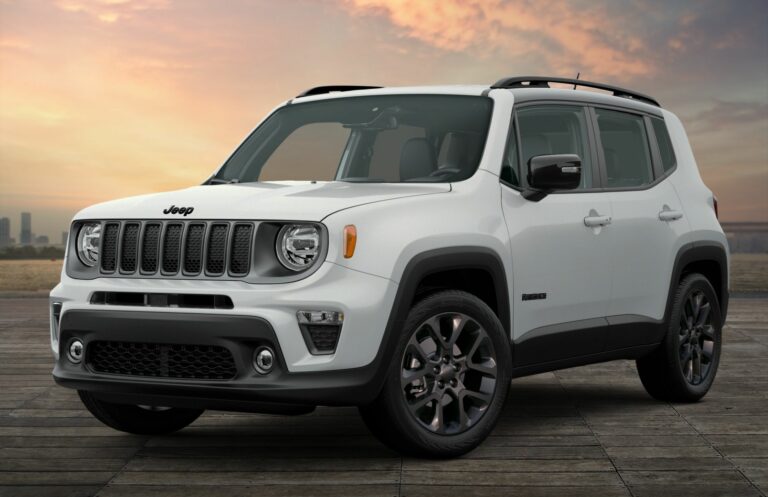Jeep Cherokee Rims: A Comprehensive Guide to Enhancing Your Ride
Jeep Cherokee Rims: A Comprehensive Guide to Enhancing Your Ride jeeps.truckstrend.com
The Jeep Cherokee, a name synonymous with adventure, capability, and rugged charm, has captivated drivers for decades. From its humble beginnings as a compact SUV to its modern, refined iterations, the Cherokee has consistently offered a unique blend of on-road comfort and off-road prowess. While the engine, suspension, and tires often grab the spotlight, one critical component frequently overlooked, yet profoundly impactful, is the set of rims.
Jeep Cherokee rims are more than just decorative circles that hold your tires. They are integral to the vehicle’s performance, safety, and aesthetic appeal. The right set of rims can transform your Cherokee’s stance, improve handling, dissipate brake heat, and even enhance fuel efficiency. Whether you’re a hardcore off-roader seeking maximum durability, a daily commuter prioritizing comfort and style, or an enthusiast looking to customize your rig, understanding the nuances of Jeep Cherokee rims is paramount. This comprehensive guide will delve into every aspect of these essential components, helping you make informed decisions for your beloved Cherokee.
Jeep Cherokee Rims: A Comprehensive Guide to Enhancing Your Ride
Understanding Jeep Cherokee Rims: The Basics
Before diving into types and choices, it’s crucial to grasp the fundamental elements of a rim (often interchangeably, though incorrectly, called a "wheel"). A rim is the outer edge of a wheel, holding the tire. The entire assembly, including the hub, spokes, and rim, is the wheel. For the purpose of this article, we’ll use "rims" to refer to the complete wheel structure, excluding the tire.
Key specifications defining a Jeep Cherokee rim include:
- Diameter: The measurement across the wheel, typically in inches (e.g., 15", 16", 17", 18", 19", 20").
- Width: The measurement of the rim from bead seat to bead seat, also in inches (e.g., 7", 8", 9").
- Bolt Pattern (PCD – Pitch Circle Diameter): The number of bolt holes and the diameter of the imaginary circle they form. This is perhaps the most critical specification for fitment (e.g., 5×4.5", 5×5", 5x110mm).
- Offset: The distance from the mounting surface of the wheel to the centerline of the wheel. It determines how far the wheel sticks out or tucks in.

- Positive Offset: The mounting surface is towards the outside of the wheel, pulling the wheel inward.
- Negative Offset: The mounting surface is towards the inside of the wheel, pushing the wheel outward.
- Zero Offset: The mounting surface is exactly at the wheel’s centerline.
- Backspacing: The distance from the mounting surface to the back edge of the wheel. This measurement is directly related to offset and is often preferred by off-roaders for clearance calculations.
- Center Bore: The hole in the center of the wheel that fits over the vehicle’s hub. It must match the hub diameter or be larger (requiring hub-centric rings).
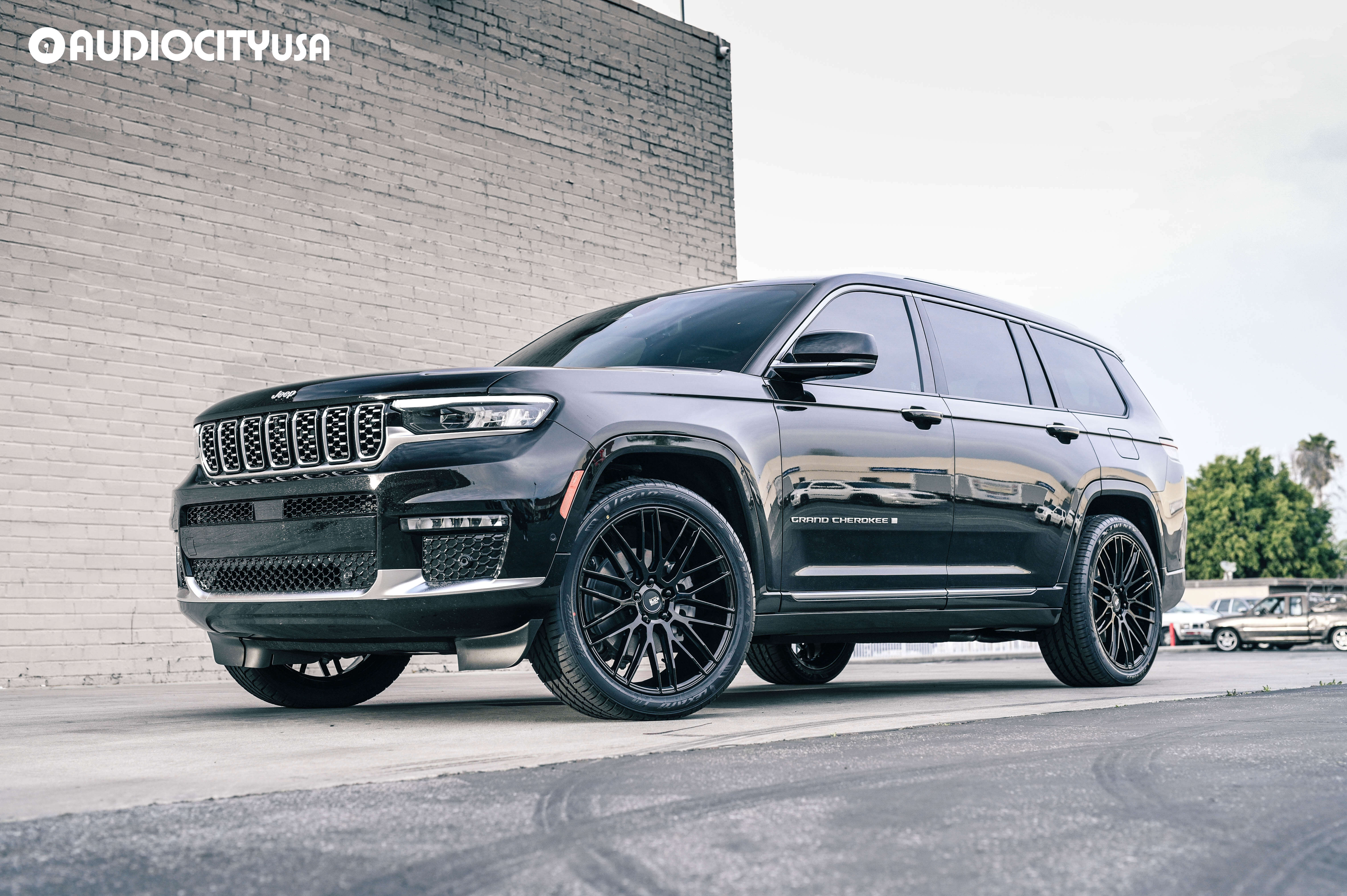
These specifications dictate not only whether a rim will physically fit your Cherokee but also how it will affect handling, tire clearance, and overall vehicle dynamics.
Types of Jeep Cherokee Rims
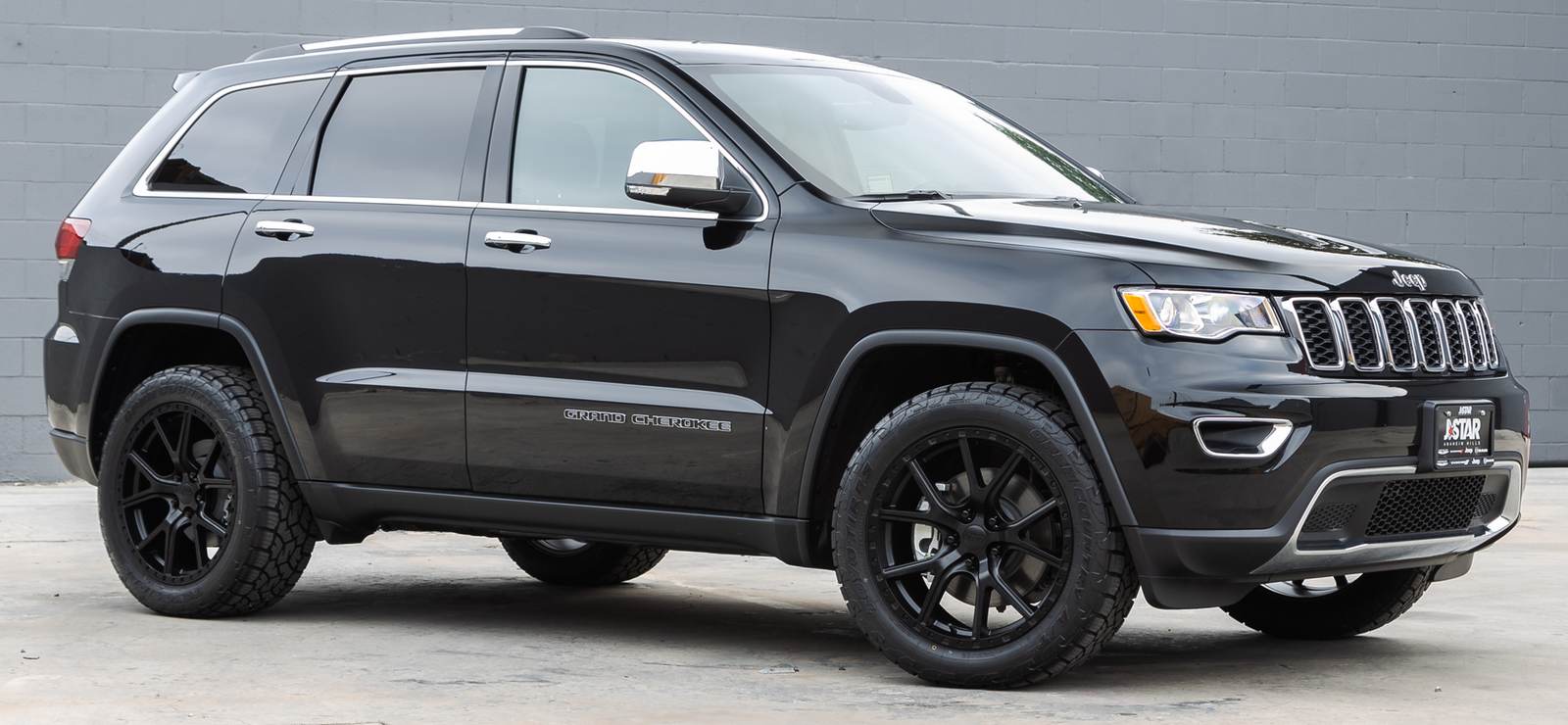
Jeep Cherokee rims come in various materials, designs, and finishes, each offering distinct advantages and aesthetics.
1. By Material:
- Steel Rims:
- Pros: Highly durable, very strong, inexpensive, easily repairable (can often be bent back into shape), excellent for serious off-roading where impacts are common. Less susceptible to catastrophic failure.
- Cons: Very heavy (negatively impacts fuel economy, acceleration, and braking), limited aesthetic options, prone to rust, poor heat dissipation.
- Best For: Budget-conscious buyers, extreme off-roaders, winter wheels.
- Alloy (Aluminum) Rims:
- Pros: Lightweight (improves performance, fuel efficiency, braking), excellent heat dissipation (good for brakes), wide range of designs and finishes, corrosion-resistant (when properly coated).
- Cons: More expensive than steel, can crack or bend under severe impact (less repairable than steel), prone to cosmetic damage.
- Manufacturing Methods:
- Cast: Most common and affordable alloy wheels, made by pouring molten aluminum into a mold.
- Forged: Strongest and lightest alloy wheels, made by pressing a solid block of aluminum under high pressure. Very expensive.
- Best For: Daily drivers, performance enthusiasts, those prioritizing aesthetics.
2. By Design and Application:
- OEM (Original Equipment Manufacturer) Rims:
- Description: Rims that come standard on your Jeep Cherokee from the factory.
- Pros: Guaranteed fitment, engineered for optimal performance with stock components, reliable, often designed to complement the vehicle’s styling.
- Cons: Limited design variety, typically more expensive to replace individually from the dealer.
- Aftermarket Rims:
- Description: Rims produced by third-party manufacturers, offering vast customization options.
- Pros: Huge variety of styles, finishes, sizes, and offsets; can be tailored for specific performance needs (e.g., lightweight racing, heavy-duty off-road); allows for personal expression.
- Cons: Requires careful research to ensure proper fitment and quality; cheap options might compromise safety or durability.
- Beadlock Capable/Simulated Beadlock Rims:
- Description: Designed for extreme off-roading, beadlock rims physically clamp the tire bead to the rim, preventing the tire from de-beading when aired down to very low pressures. Simulated beadlocks offer the aggressive look without the functional clamping.
- Pros: Essential for serious rock crawling or deep sand driving at low tire pressures.
- Cons: Often not street-legal (true beadlocks), require specialized mounting, heavy, expensive.
Choosing the Right Rims for Your Jeep Cherokee
Selecting the perfect rims involves balancing your vehicle’s specifications, your driving habits, budget, and personal style.
-
Know Your Cherokee’s Generation and Specs:
- Cherokee XJ (1984-2001): Typically 5×4.5" (5×114.3mm) bolt pattern. Common rim sizes 15-17 inches.
- Liberty/Cherokee KJ (2002-2007): 5×4.5" (5×114.3mm) bolt pattern.
- Liberty/Cherokee KK (2008-2012): 5×4.5" (5×114.3mm) bolt pattern.
- Cherokee KL (2014-2023): 5x110mm bolt pattern. This is a crucial distinction from older models.
- Grand Cherokee (WK/XK/WL): These models typically use a 5×5" (5x127mm) bolt pattern, different from the compact Cherokee line. Always double-check your specific model year and trim.
-
Determine Your Intended Use:
- Daily Driving/On-Road: Prioritize lightweight alloy rims for better fuel economy, improved handling, and brake performance. Aesthetically pleasing designs and finishes are also a plus.
- Light Off-Roading/Overlanding: Durable alloy rims or even steel rims are good choices. Consider slightly negative offset for a wider stance and better stability.
- Serious Off-Roading/Rock Crawling: Steel rims or heavy-duty forged alloy rims are preferred for their strength. Negative offset is often desired for increased articulation and clearance. Beadlock-capable rims might be necessary if you run very low tire pressures.
-
Consider Tire Compatibility:
- Rims must be wide enough for your chosen tire size. Consult tire manufacturer specifications for recommended rim width ranges.
- Larger diameter rims often mean lower profile tires, which can impact ride comfort and off-road capability (less sidewall flex).
- Smaller diameter rims (e.g., 15" for XJ) allow for more sidewall, crucial for airing down off-road.
-
Factor in Clearance Issues:
- Brake Calipers: Ensure the rim design clears your brake calipers, especially if upgrading to larger brakes.
- Suspension Components: The inner edge of the rim and tire must clear control arms, steering components, and shocks. This is where backspacing/offset are critical.
- Fender Wells/Flares: If going with wider tires or a significantly negative offset, rubbing on fenders (especially during turns or suspension compression) is common. A lift kit or fender trimming might be necessary.
-
Aesthetics and Finish:
- Finishes: Chrome (shiny, classic), Black (aggressive, modern), Machined (industrial, contrast), Polished (bright, custom), Painted (color-matched, unique).
- Style: Spoke count, spoke design (straight, curved, mesh), lip depth. Choose a style that complements your Cherokee’s color and your personal taste.
-
Budget:
- Steel rims are the most economical.
- Cast alloy rims offer a good balance of cost and performance.
- Forged alloy and true beadlock rims are significantly more expensive. Remember to factor in the cost of new lug nuts, valve stems, and potentially TPMS sensors.
Important Technical Considerations
- Bolt Pattern Accuracy: This cannot be stressed enough. A 5×4.5" rim will NOT fit a 5x110mm hub, and vice-versa. Attempting to force an incorrect bolt pattern can lead to dangerous failures.
- Offset and Backspacing Explained:
- A smaller (more negative) offset or smaller backspacing pushes the wheel further out from the vehicle. This can provide a wider, more aggressive stance and increase stability but can also lead to rubbing issues on fenders.
- A larger (more positive) offset or larger backspacing tucks the wheel further under the vehicle. This is less likely to cause fender rubbing but might interfere with inner suspension components.
- For most Cherokees, especially those with larger tires or lift kits, a slightly negative offset or smaller backspacing is often preferred to gain clearance for wider tires and improve off-road stability.
- Center Bore: If the rim’s center bore is larger than your vehicle’s hub, you’ll need hub-centric rings to ensure the wheel is centered on the hub, preventing vibrations. If it’s smaller, it simply won’t fit.
- Load Rating: Ensure the chosen rims have a sufficient load rating for your Cherokee’s Gross Vehicle Weight Rating (GVWR) and any towing you plan to do. This is especially critical for heavy-duty applications or larger tires.
Installation and Maintenance Tips
- Professional Installation: While seemingly simple, proper tire mounting, balancing, and wheel installation are crucial for safety and performance. Use a reputable shop.
- Torque Specifications: Always tighten lug nuts to the manufacturer’s specified torque settings using a torque wrench. Re-torque after the first 50-100 miles of driving. Incorrect torque can lead to loose wheels or damaged studs.
- Cleaning: Regularly clean your rims, especially alloy ones, to prevent the buildup of brake dust and road grime, which can corrode finishes. Use wheel-specific cleaners and avoid harsh chemicals or abrasive brushes.
- Inspection: Periodically inspect your rims for any signs of damage, cracks, bends, or corrosion, especially after off-road excursions.
- Tire Rotation: Follow your vehicle’s recommended tire rotation schedule to ensure even tire wear and extend the life of your tires and rims.
Potential Challenges and Solutions
- Tire Rubbing:
- Cause: Incorrect offset/backspacing, too wide a tire, insufficient lift.
- Solution: Adjust offset (spacers, new rims), narrower tires, install a lift kit, trim fenders/fender liners.
- Vibrations:
- Cause: Improper balancing, bent rim, incorrect center bore (no hub-centric rings), loose lug nuts.
- Solution: Re-balance wheels, inspect for damage, install hub-centric rings, re-torque lug nuts.
- Incorrect Fitment:
- Cause: Wrong bolt pattern, center bore too small.
- Solution: Return and exchange for correct rims. Always double-check specs before purchase.
- Damage (Bends/Cracks):
- Cause: Potholes, off-road impacts.
- Solution: Steel rims can often be bent back. Alloy rims are harder to repair; cracks usually mean replacement. Consult a wheel repair specialist.
Estimated Price Table for Jeep Cherokee Rims
Please note: Prices are highly variable based on brand, specific model, finish, and current market conditions. This table provides a general estimated range per rim for various types of Jeep Cherokee rims. Installation, lug nuts, and TPMS sensors are typically extra.
| Rim Type/Material | Diameter Range (in.) | Width Range (in.) | Estimated Price Range (Per Rim) | Key Features/Notes | Compatible Cherokee Generations |
|---|---|---|---|---|---|
| Basic Steel Rims | 15" – 17" | 7" – 8" | $70 – $150 | Heavy-duty, budget-friendly, common for off-road/winter. Basic aesthetics. | XJ, KJ, KK (older models) |
| Standard Cast Alloy Rims | 15" – 20" | 7" – 9" | $120 – $300 | Lightweight, good heat dissipation, wide variety of styles/finishes. Good for daily use. | All Generations (check bolt pattern) |
| Premium Cast Alloy Rims | 17" – 20" | 8" – 9.5" | $300 – $600 | Higher quality finishes, more complex designs, reputable brands. Improved strength. | All Generations (check bolt pattern) |
| Forged Alloy Rims | 17" – 20" | 8" – 10" | $600 – $1500+ | Lightest & strongest, top-tier performance, custom options. Very high end. | All Generations (check bolt pattern) |
| Beadlock-Capable Rims | 15" – 17" | 8" – 9" | $250 – $700 | Designed for extreme off-roading, robust construction. Often heavy. | XJ, KJ, KK (less common for KL) |
Disclaimer: Prices are estimates and subject to change. Always verify current pricing with retailers.
Frequently Asked Questions (FAQ) About Jeep Cherokee Rims
Q1: Can I put bigger rims on my Jeep Cherokee?
A1: Yes, within limits. You can typically go up 1-2 inches in diameter from stock, provided you account for tire size, offset, and backspacing to avoid rubbing. For the KL generation, larger diameters are more common. For older XJs, smaller diameters (15-16 inch) are often preferred for off-roading to allow for more tire sidewall. Always check for brake caliper clearance.
Q2: What’s the difference between offset and backspacing?
A2: They are two ways to measure the same thing – how far the wheel sits relative to the mounting hub. Offset is the distance from the mounting surface to the wheel’s centerline, while backspacing is the distance from the mounting surface to the wheel’s inner edge. A smaller backspacing number (or more negative offset) pushes the wheel further out.
Q3: Do I need new lug nuts when I buy new rims?
A3: Often, yes. Aftermarket rims may require different lug nuts (e.g., tapered seat vs. spherical seat) to ensure proper and safe fitment. Always verify with the rim manufacturer or your installer.
Q4: Are steel rims better for off-roading than alloy rims?
A4: It depends on the type of off-roading. For extreme rock crawling or situations where impacts are common, steel rims are often preferred due to their durability and ability to be bent back into shape. However, modern heavy-duty forged alloy rims can also be incredibly strong and offer the advantage of lighter weight. For general trail use, good quality alloy rims are perfectly fine.
Q5: How often should I clean my rims?
A5: Regularly, especially if you have alloy rims or custom finishes. Brake dust is corrosive. Aim for at least once a month, or more frequently if driving in harsh conditions (salt, dirt).
Q6: What is a hub-centric ring?
A6: A hub-centric ring is a spacer used when an aftermarket wheel’s center bore is larger than the vehicle’s hub. It ensures the wheel is perfectly centered on the hub, which prevents vibrations and ensures the wheel’s weight is supported by the hub, not just the lug nuts.
Q7: Can I use Jeep Grand Cherokee rims on my Jeep Cherokee?
A7: Generally, no, due to different bolt patterns. Most Grand Cherokees (WK, WK2, WL generations) use a 5×5" (5x127mm) bolt pattern, while the Cherokee XJ, KJ, and KK use 5×4.5" (5×114.3mm), and the KL uses 5x110mm. Always double-check the exact bolt pattern for both your vehicle and the rims you’re considering.
Conclusion
Jeep Cherokee rims are far more than just components; they are a statement of style, a functional enhancement, and a critical element of your vehicle’s performance and safety. By understanding the different types, technical specifications, and the impact they have on your driving experience, you can make an informed decision that elevates your Cherokee to its full potential. Whether you’re chasing enhanced off-road capability, improved on-road handling, or simply a personalized aesthetic, investing in the right set of rims will undoubtedly transform your Jeep Cherokee and enhance every adventure it undertakes. Choose wisely, drive confidently, and enjoy the journey!

